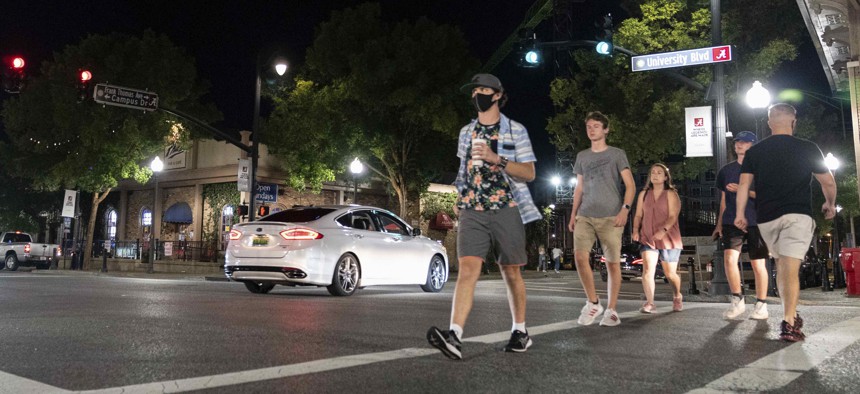Rise in Virus Among Young Adults Poses Threat to Older Americans, CDC Warns

People make their way along The Strip, the University of Alabama's bar scene, Saturday, Aug. 15, 2020, in Tuscaloosa, Ala. AP Photo/Vasha Hunt

Connecting state and local government leaders
Data cited in a new report indicates that increased cases among older adults have followed upticks among younger parts of the population.
As coronavirus infections become more common in adults under 40 years-old, it appears to be fueling the spread of the virus among older Americans who are more likely to face graver health risks from it, the Centers for Disease Control and Prevention is cautioning.
Earlier on in the pandemic, older adults were more likely to be diagnosed with Covid-19, the highly contagious respiratory disease that the virus causes. But in more recent months that has been changing, according to data in a report the CDC released this week.
Nationwide, the median age of people with confirmed cases of the virus declined from 46 in May to 37 in July and 38 in August. From June to August, Covid-19 incidence was highest among people aged 20 to 29, with this group accounting for over 20% of all confirmed cases.
The virus’ shift towards younger Americans occurred throughout the country.
In general, younger people without preexisting health conditions tend to be less susceptible than older people to the worst health effects from the virus. But they can easily spread it to those who are more at risk—especially if they are showing only mild symptoms or no symptoms.
The CDC report explains how in parts of the southern U.S. where there were outbreaks in June, increases in the percentage of positive test results for Covid-19 among people who were 20 to 39, preceded increases among those 60 and older by about nine days, on average.
“This report provides preliminary evidence that younger adults contributed to community transmission of Covid-19 to older adults,” the CDC report says.
“Further investigation of community transmission dynamics across age groups to identify factors that might be driving infection among younger adults and subsequent transmission to older adults is warranted,” it adds.
The CDC points to factors that have to do with both behavior and employment that potentially put younger adults at higher risk of catching the virus.
For example, younger people are more likely to hold jobs that require in-person interaction—in fields like retail, child care and restaurants. And they may be less inclined to follow public health guidelines, like those advising against group gatherings, the report says.
In recent weeks, some colleges around the country have drawn attention, and raised public health concerns, as cases have climbed in the areas where they are located.
The CDC report can be found here.
Bill Lucia is a senior reporter for Route Fifty and is based in Olympia, Washington.

NEXT STORY: California Expands Privacy Protection to Public Health Workers Amid Threats





